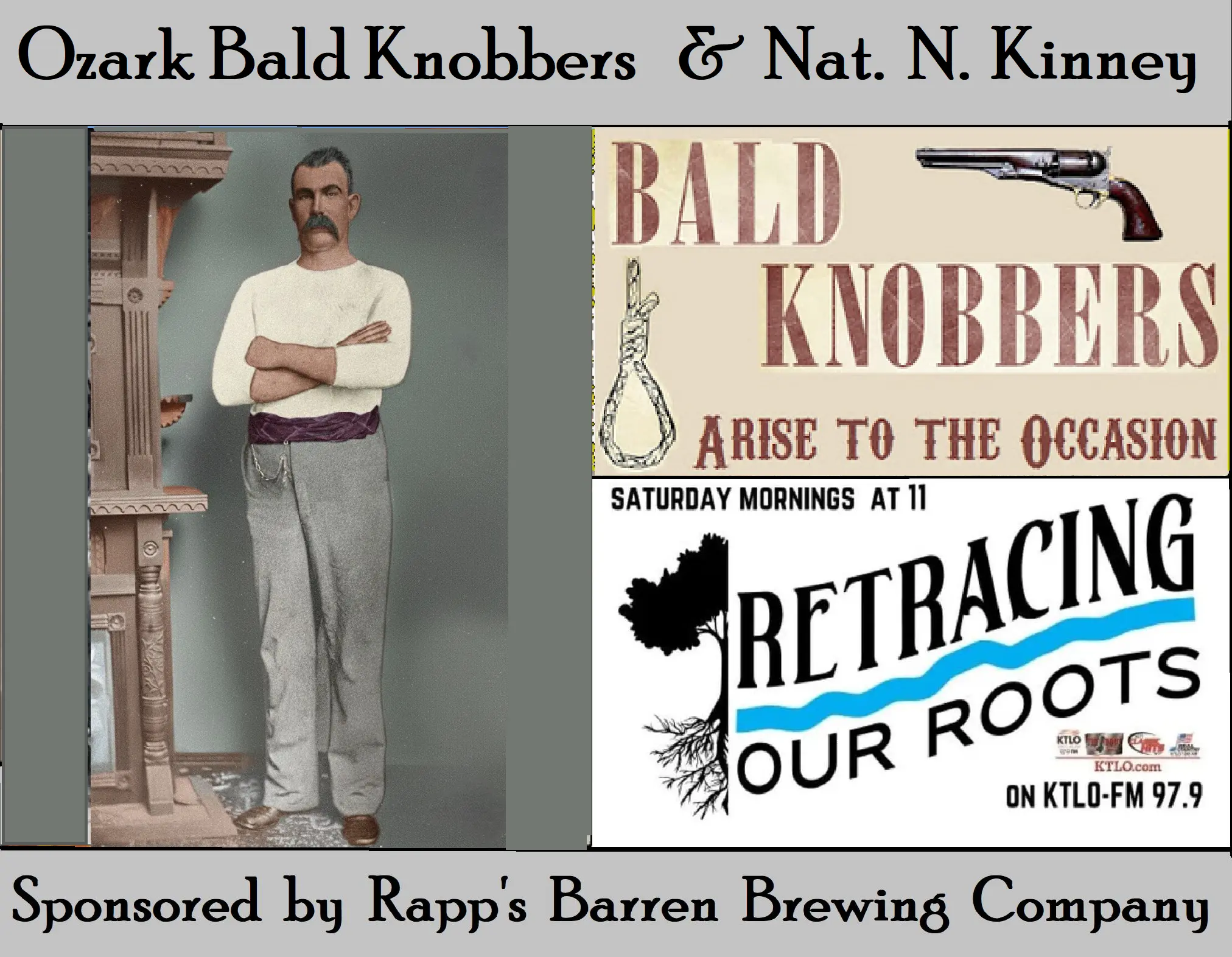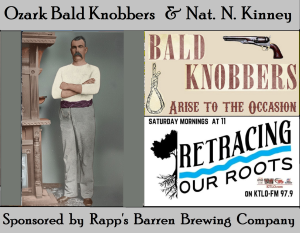
𝙍𝙚𝙩𝙧𝙖𝙘𝙞𝙣𝙜 𝙊𝙪𝙧 𝙍𝙤𝙤𝙩𝙨
Ozark Bald Knobbers and Nat. N. Kinney
Welcome to Retracing Our Roots, as Sammy Raycraft and Vincent S. Anderson, invite you on a vibrant journey through the heart of Ozark entertainment and lore. Today, we’re diving into the fascinating, multifaceted story of the Bald Knobbers. It’s a name that carries two distinct legacies, one born in the foot-stomping theaters of Branson, Missouri, and another rooted as a vigilante group in the shadowy hills and knobs of the 1880s Ozarks.
The Baldknobbers: A Hillbilly Jamboree Legacy
In the heart of the Ozarks, where the hills hum with stories and songs, the Baldknobbers burst onto the scene in 1959. It all began with the Mabe brothers: Jim, Lyle, Bill, and Bob. These four siblings with a knack for music and hilarious, and sometimes mischievous, comedy. They banded together to create Branson, Missouri’s first-ever show as a hillbilly extravaganza that would echo through the decades.
At the center of this wild, toe-tapping spectacle was Lyle W. Mabe, better known by his stage name, George Aggernite, a moniker his father gave him when he was just a boy. To many, George wasn’t just a performer; he was a larger-than-life figure, a whirlwind of charisma who owned the stage with every step, stumble, strum, and toothless grin.
Back in the 1970s, George Aggernite became a familiar face beyond the Branson stage, popping up on Springfield’s KYTV Channel 3 News at ten o’clock. Before the weather forecast, he’d slip into a commercial for Empire Gas, cracking jokes or tossing out ad-libs that left viewers chuckling. His signature tagline, “Empire Gas… It’s Economical!” was delivered with a twinkle in his eye, though sometimes he’d fumble the word “Economical,” especially when he’d ditched his dentures for comedic effect. The syllables would trip over themselves, and the audience loved him all the more for it. He even teamed up with KYTV sportscaster Ned Reynolds for a bit called “Gasnac the Magnificent,” a hilarious riff on Johnny Carson’s “Carnac the Magnificent,” blending Ozark charm with late-night wit.
Every so often, the Bald Knobbers Hillbilly Jamboree would pack up their instruments and hit the road. In late April 1972, they rolled into Mountain Home, Arkansas, for a performance that promised a night of unforgettable chaos. Tickets were a steal, according to today’s standards. They were $1.25 for adults, fifty cents for kids. The small Mtn. Home High School gym auditorium buzzed with anticipation. The stage was a splendid mess of musicians, instruments, cords, and gear.
Other featured stars were characters like the Wild Man shredding on guitar, Droopy Drawers keeping time on the washboard, and, of course, George Aggernite thumping a single string on his washtub bass. Every note they played and sang reverberated with hillbilly heart. The show would always end with a selection of Ozark gospel hymns.
The night kicked off with a surge of energy, the crowd roaring after the second song when George Aggernite was announced. True to form, he charged onto the stage, only to trip spectacularly over his washtub and tumble off the platform. A collective gasp swept through the auditorium, followed by a moan as the crowd feared their star was down for the count. But George was no ordinary performer. With the grit of a true showman, he clambered back onto the stage, dusted himself off, and bandaged his shin.
Moments later, he strutted back out, grinning as if nothing had happened, and carried on with the show. George fired off a string of jokes that had the audience in their own stitches. He played a full montage of songs as his was thumping his washtub bass.
George Aggernite was resilient, uproarious, and utterly unforgettable. The Bald Knobbers weren’t just a band; they were a celebration of Ozark spirit, and George was their beating heart, turning every misstep into a moment of magic.
Then Other Bald Knobbers
First, we must realize the prejudice and perception against the local Ozark Hillbilly in the 1880s. Northern city newspapers would write derogatory columns mocking our standard of living and plight. For example, St. Louis Globe-Democrat from March 26, 1887, would detail one such perspective.
“The men in this country are long, and lean, and lank unusually. As a general thing they are long-haired as they are long-legged. When seen walking on the hills and contrasted with their little cramped houses, the wonder is how these latter can accommodate the former unless, as their shapes would indicate, they double up like jack-knives when they repose.
Some of them must certainly sleep with their feet out of doors. The crouching in the little houses has given them a stoop which adds the impression of their height. Their skins vary between about the color of the black coffee they drink and the iron stains on the rocks in the mountain roads.
Some there are so hairy that it is impossible to tell where scalp leaves off and beard begins, or vice versa.
Their clothing is generally patched to such extent that the patches have completely taken the place of the original material, and a man thinks he’s wearing an entirely new pair of very variegated color, pattern and texture. The patches overlap each other like geologic strata, but has not been estimated, the age of these clothes can’t be approximated nearly as close as the age of these everlasting hills.
The native is so use to crowding up at home that he crowds his ribs in with his arms in the open air as if he was afraid of expansion, and hurries his hands away down in his pockets.”
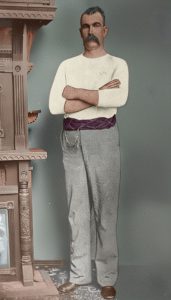
Lawlessness and the Vigilante Idea
In the midst of these situations, lawlessness reigned throughout the Ozarks with murders rarely coming to light under the law.
The Bald Knobbers were born from the formidable presence of Nat N. Kinney. It was rumored and documented Kinney was a giant of a man standing six-and-a-half feet tall, weighing 300 pounds. In reality, he could have been a little shorter and only 200 pounds.
Kinney’s past included service as a Civil War as a Union soldier in West Virginia. He also acquired other titles such as a saloon brawler and western vigilante.
Kinney briefly settled in Springfield, Missouri, and worked in a saloon, as he was looking for prominence as a leader in Greene County, but it never materialized.
After settling near Kirbyville in 1880 seeking tranquility, Kinney instead discovered a community besieged by lawlessness. Since the war, Taney County had witnessed more than 30 murders without a single conviction.
In 1883, determined to fight back against the marauders who had terrorized the region since Reconstruction, Kinney assembled thirteen men on Snapp's Bald to form the Bald Knobbers. He rallied supporters even during church services at the Oak Grove Schoolhouse/Church, used as a Sunday School. Kinney denounced the prevailing anarchy in the region, his Bible conspicuously flanked by pistols. With his commanding charisma and stories of frontier justice, he proposed a vigilante force; soon, 300 men had joined, gathering on the barren knobs near his home to strategize their crusade.
Donning crude masks made from flour sacks, Kinney's Bald Knobbers rode through the Ozark hills dispensing their own brutal form of order. Their methods were whippings, intimidation, and lynchings. Soon this justice league transformed themselves from community protectors into local tyrants.
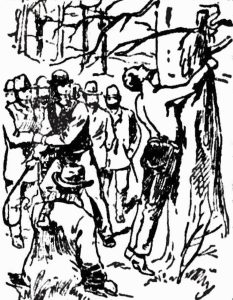
Public resistance solidified, and it fractured the region into rival factions: the Bald Knobbers and the Anti-Bald Knobbers. This division ignited a bloody feud. Night after night, the Ozarks were illuminated by the flames of burning courthouse, smoldering homesteads, echoed with the screams of the punished. The Ozark hills shook under the hoofbeats of masked riders, with each side blaming the other for the escalating terror.
A leading voice of opposition was Andrew Coggburn, who, despite repeated brutalization by Kinney's men, refused to be silenced, even in church. Mocking Kinney's arrogant demeanor by dubbing him the "Old Blue Gobbler," it is said Coggburn even composed a taunting song that intensified their bitter rivalry.
The conflict reached its climax in March 1886 outside the Oak Grove Schoolhouse. As Kinney approached, Coggburn and his allies (including lady family members with pistols under their skirts) stood their ground, hands hovering near their weapons. A sudden volley of gunfire left Coggburn dead in the dust, while Kinney walked away unharmed. The Anti-Bald Knobbers immediately vowed revenge, swearing that Kinney’s days were numbered.
Kinney’s demise arrived on August 21, 1888, inside a Forsyth store he had acquired through a lawsuit. Without warning, a barrage of gunshots erupted. A disgruntled Billy Miles stepped out and calmly announced he had killed the "Old Blue Gobbler." Kinney lay dead, struck by four bullets. Miles was acquitted on claims of self-defense and hailed as a hero by many townspeople.
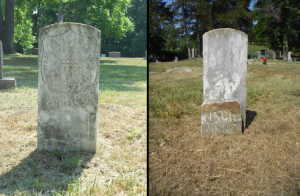
The Taney County Bald Knobbers disbanded by 1889, leaving behind a legacy of fear, division, and a deeply complex chapter in the history of the Ozarks. Yet, this emboldened other Bald Knobber groups in other Southern Missouri counties.
More on these next week!
- - - -
𝗧𝗵𝗮𝗻𝗸 𝘆𝗼𝘂, 𝗥𝗮𝗽𝗽’𝘀 𝗕𝗮𝗿𝗿𝗲𝗻 𝗕𝗿𝗲𝘄𝗶𝗻𝗴 𝗖𝗼𝗺𝗽𝗮𝗻𝘆!
A big thank you to our friends at Rapp’s Barren Brewing Company, and congratulations on your recent 8-year Anniversary. Their ongoing support is what helps 𝙍𝙚𝙩𝙧𝙖𝙘𝙞𝙣𝙜 𝙊𝙪𝙧 𝙍𝙤𝙤𝙩𝙨 echo through the hills with the true stories of the Ozarks, stories you will not find in the average history book. It is partnerships like theirs that keep our heritage alive, one story at a time.
Next time you are in downtown Mountain Home, stop by Rapp’s and thank Russell Tucker and his incredible team. They are helping preserve local history with heart and hometown pride.
Sip. Savor. Sojourn.
𝙍𝙚𝙩𝙧𝙖𝙘𝙞𝙣𝙜 𝙊𝙪𝙧 𝙍𝙤𝙤𝙩𝙨











